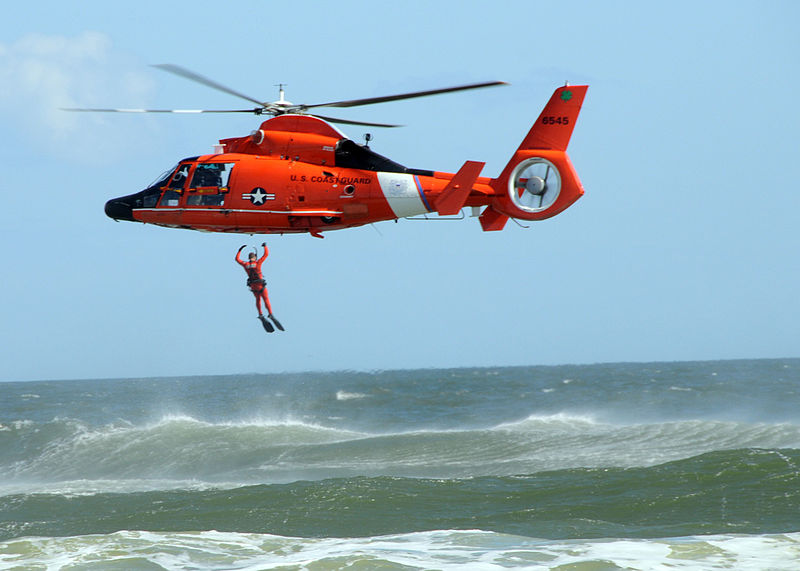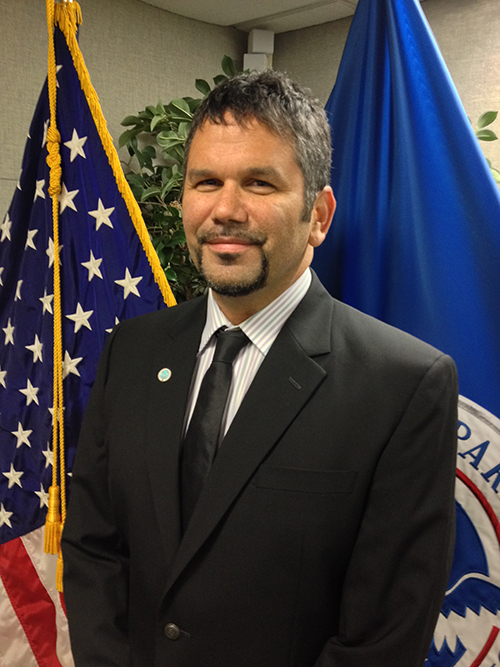Wild Weather Jobs: SARSAT Search and Rescue Specialist
Picture this: you and three of your good friends take a brand-new, homemade sailboat for a maiden voyage off the coast of Florida. You find out that the boat is not as seaworthy as you had hoped. As night falls, you make it 20 miles off shore before the unthinkable happens—it sinks.
You and your buddies are stuck in the middle of the ocean with nothing but the pitch-black darkness and the cool ocean waters around you. You drift aimlessly as the currents and winds take you even further off course.
Yet somehow, in that total darkness, an aircraft above sees your bobbing heads floating above the water. Help is on the way!
This isn’t some far-fetched story. It actually happened, according to Coast Guard search and rescue specialist Christopher Eddy.
Satellites to the rescue!
Eddy is one of the folks who receive distress signals from people in need of a speedy rescue. He organizes and oversees the search and rescue attempt.
But finding the people in distress can be like “looking for coconuts in the water at night,” Eddy says. And, people are constantly moving because of currents and winds. In fact, our wayward sailors were 30 miles away from where their boat sank when they were found.
A SARSAT beacon (SARSAT stands for Search and Rescue Satellite Aided Tracking) is what saved them that day. When the sailors’ boat sank, they turned on their beacon, which sent a distress signal to a satellite.
A collection of SARSAT beacons. Credit: NOAA.

A Coast Guardsman leaps from a helicopter into the ocean. Credit: US Navy.
That satellite then relayed the signal to the SARSAT Mission Control Center based at NOAA’s Satellite Operations Facility in Suitland, Md, which then relayed it to Miami, the closest rescue coordination center, where Eddy received it.
He immediately sent out a plane capable of tracking the radio signal from the beacon. This plane located the sailors and directed rescue crews right toward them.
Eddy is often the first person that receives the data from these beacons—computers run the system automatically before the information reaches him. He must immediately assess whether or not the information is reliable, and then figure out the best way to send help.
Eddy’s job is an important one. “It’s not like you can just push a button,” he says, “you have to do a lot of work.” He is part mission coordinator and part detective. After setting up the rescue effort, he must learn as much as he can about the owner of the beacon, and about any boat or plane involved.
How did he get such a cool job?
Eddy knows a lot about every aspect of the search and rescue process. As an active duty Coast Guardsman, Eddy participated in lots of rescues—often finding himself piloting tiny boats many miles off shore to locate and rescue victims, gaining valuable experience along the way. And now, due to the popularity of the warm Florida waters, he oversees rescues at one of the largest and most complex search and rescue coordination centers in the country as a civilian.
Without skilled leaders like Eddy, it's possible that our sailors’ scary story could have had a bad ending. Instead, experience, satellites, and a tiny SARSAT beacon combined to create a happy ending for a very unfortunate situation.








